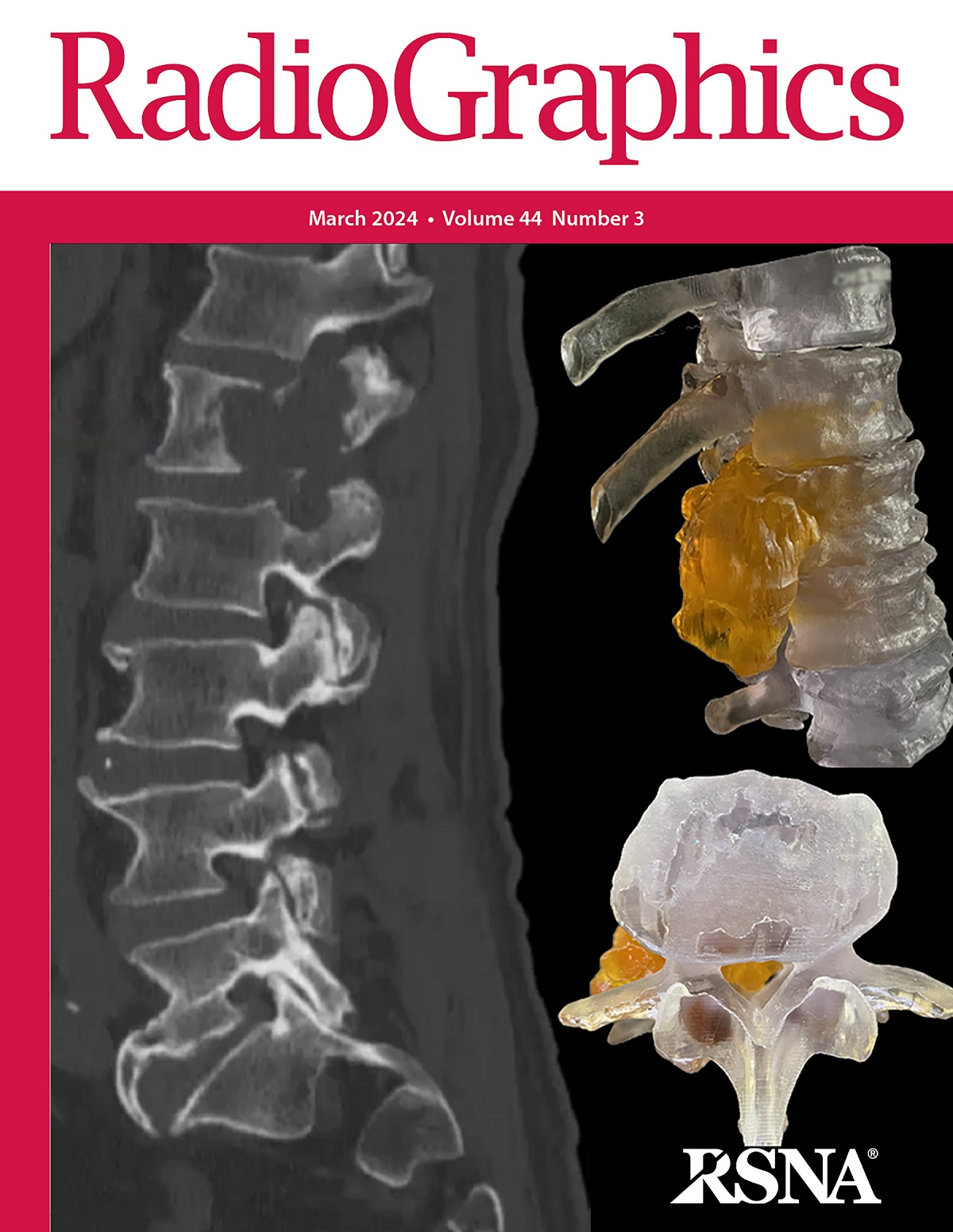求助PDF
{"title":"运动损伤的肌肉愈合:基于单一机构经验和临床观察的核磁共振成像结果和拟议分类。","authors":"Jaime Isern-Kebschull, Sandra Mechó, Carles Pedret, Ricard Pruna, Xavier Alomar, Ara Kassarjian, Antonio Luna, Javier Martínez, Xavier Tomas, Gil Rodas","doi":"10.1148/rg.230147","DOIUrl":null,"url":null,"abstract":"<p><p>MRI plays a crucial role in assessment of patients with muscle injuries. The healing process of these injuries has been studied in depth from the pathophysiologic and histologic points of view and divided into destruction, repair, and remodeling phases, but the MRI findings of these phases have not been fully described, to our knowledge. On the basis of results from 310 MRI studies, including both basal and follow-up studies, in 128 athletes with muscle tears including their clinical evolution, the authors review MRI findings in muscle healing and propose a practical imaging classification based on morphology and signal intensity that correlates with histologic changes. The proposed phases, which can overlap, are destruction (phase 1), showing myoconnective tissue discontinuity and featherlike edema; repair (phase 2), showing filling in of the connective tissue gaps by a hypertrophic immature scar; and remodeling (phase 3), showing scar maturation and regression of the edema. A final healed stage can be identified with MRI, which is characterized by persistence of a slight fusiform thickening of the connective tissue. This information can be obtained from a truncated MRI protocol with three acquisitions, preferably performed with a 3-T magnet. During MRI follow-up of muscle injuries, other important features to be assessed are changes in muscle edema and specific warning signs, such as persistent intermuscular edema, new connective tear, and scar rupture. An understanding of the MRI appearance of normal and abnormal muscle healing and warning signs, along with cooperation with a multidisciplinary team, enable optimization of return to play for the injured athlete. <sup>©</sup>RSNA, 2024 See the invited commentary by Flores in this issue.</p>","PeriodicalId":54512,"journal":{"name":"Radiographics","volume":"44 8","pages":"e230147"},"PeriodicalIF":5.2000,"publicationDate":"2024-08-01","publicationTypes":"Journal Article","fieldsOfStudy":null,"isOpenAccess":false,"openAccessPdf":"","citationCount":"0","resultStr":"{\"title\":\"Muscle Healing in Sports Injuries: MRI Findings and Proposed Classification Based on a Single Institutional Experience and Clinical Observation.\",\"authors\":\"Jaime Isern-Kebschull, Sandra Mechó, Carles Pedret, Ricard Pruna, Xavier Alomar, Ara Kassarjian, Antonio Luna, Javier Martínez, Xavier Tomas, Gil Rodas\",\"doi\":\"10.1148/rg.230147\",\"DOIUrl\":null,\"url\":null,\"abstract\":\"<p><p>MRI plays a crucial role in assessment of patients with muscle injuries. The healing process of these injuries has been studied in depth from the pathophysiologic and histologic points of view and divided into destruction, repair, and remodeling phases, but the MRI findings of these phases have not been fully described, to our knowledge. On the basis of results from 310 MRI studies, including both basal and follow-up studies, in 128 athletes with muscle tears including their clinical evolution, the authors review MRI findings in muscle healing and propose a practical imaging classification based on morphology and signal intensity that correlates with histologic changes. The proposed phases, which can overlap, are destruction (phase 1), showing myoconnective tissue discontinuity and featherlike edema; repair (phase 2), showing filling in of the connective tissue gaps by a hypertrophic immature scar; and remodeling (phase 3), showing scar maturation and regression of the edema. A final healed stage can be identified with MRI, which is characterized by persistence of a slight fusiform thickening of the connective tissue. This information can be obtained from a truncated MRI protocol with three acquisitions, preferably performed with a 3-T magnet. During MRI follow-up of muscle injuries, other important features to be assessed are changes in muscle edema and specific warning signs, such as persistent intermuscular edema, new connective tear, and scar rupture. An understanding of the MRI appearance of normal and abnormal muscle healing and warning signs, along with cooperation with a multidisciplinary team, enable optimization of return to play for the injured athlete. <sup>©</sup>RSNA, 2024 See the invited commentary by Flores in this issue.</p>\",\"PeriodicalId\":54512,\"journal\":{\"name\":\"Radiographics\",\"volume\":\"44 8\",\"pages\":\"e230147\"},\"PeriodicalIF\":5.2000,\"publicationDate\":\"2024-08-01\",\"publicationTypes\":\"Journal Article\",\"fieldsOfStudy\":null,\"isOpenAccess\":false,\"openAccessPdf\":\"\",\"citationCount\":\"0\",\"resultStr\":null,\"platform\":\"Semanticscholar\",\"paperid\":null,\"PeriodicalName\":\"Radiographics\",\"FirstCategoryId\":\"3\",\"ListUrlMain\":\"https://doi.org/10.1148/rg.230147\",\"RegionNum\":1,\"RegionCategory\":\"医学\",\"ArticlePicture\":[],\"TitleCN\":null,\"AbstractTextCN\":null,\"PMCID\":null,\"EPubDate\":\"\",\"PubModel\":\"\",\"JCR\":\"Q1\",\"JCRName\":\"RADIOLOGY, NUCLEAR MEDICINE & MEDICAL IMAGING\",\"Score\":null,\"Total\":0}","platform":"Semanticscholar","paperid":null,"PeriodicalName":"Radiographics","FirstCategoryId":"3","ListUrlMain":"https://doi.org/10.1148/rg.230147","RegionNum":1,"RegionCategory":"医学","ArticlePicture":[],"TitleCN":null,"AbstractTextCN":null,"PMCID":null,"EPubDate":"","PubModel":"","JCR":"Q1","JCRName":"RADIOLOGY, NUCLEAR MEDICINE & MEDICAL IMAGING","Score":null,"Total":0}
引用次数: 0
引用
批量引用


